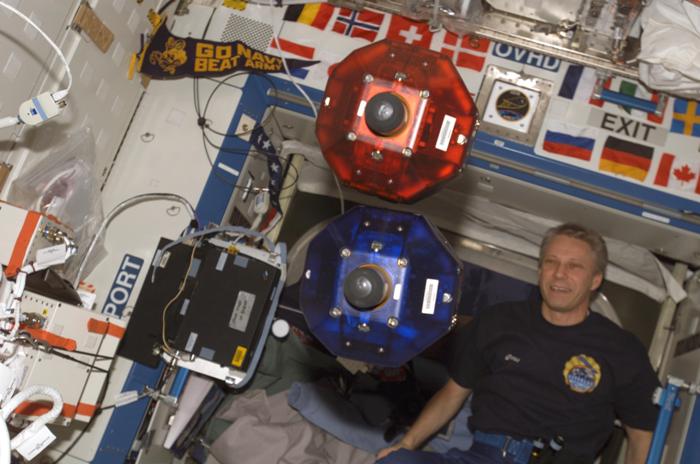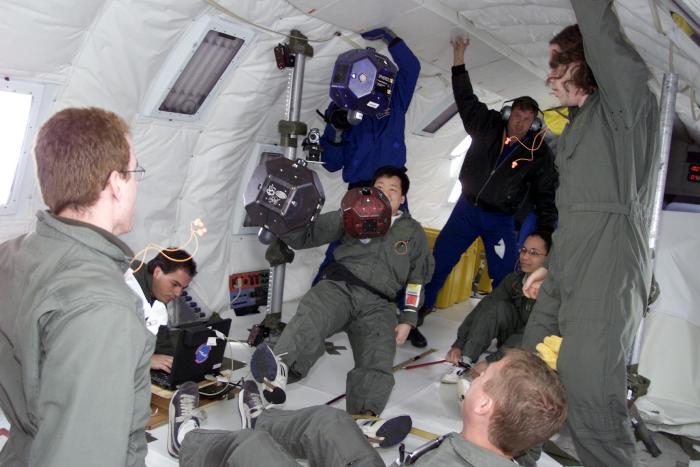Google’s Project Tango Now Added to NASA Tech in ISS
The smartphone and tablet project of Google dubbed as Project Tango is now in space. It will not have the opportunity to invade people’s privacy as it is feared down on Earth but it is set to become a useful tool for furthering space science. After a successful launch last July 11, Sunday, Google’s 3D smartphone along with a group of small satellites flew to the International Space Station. To emphasize, that’s NASA, not NSA. You can be assured Google or the United States government won’t be spying on you from space.
Space scientists using Google’s technology is nothing new. A few years back, Google’s Nexus S and Nexus One devices were flown up into space, taking on separate missions. This year, Google is once again providing its technology to space scientists to augment their capabilities. Through Google’s Project Tango, NASA robots are expected to become better at navigating the International Space Station.
SPHERES
Project Tango will be playing a role in NASAs’ SPHERES or Synchronized Position Hold, Engage, Reorient, Experimental Satellite program. Google’s Project Tango smartphones come with next-generation 3D sensing technology that will become the eyes and brains of the ball-shaped hovering robots working at the International Space Station. It is envisioned that SPHERES will one day take over the routines of astronauts who handle risky tasks outside of the International Space Station.
SPHERES are robots consisting of three self-contained free-flying bowling ball sized satellites intended to be used within the International Space Station. The SPHERES program is mainly an experiment that seeks to test algorithms on relative altitude control and station-keeping between the three satellites to find out the best way for formation flying. It aims to test theories and calculations that coordinate the motion of several bodies that maneuver in microgravity.
The balls come with collision avoidance, fuel balancing, image plane filling maneuver features, and an array of geometry estimators to allow them to “skillfully” move around in the ISS. The spheres or balls aren’t exactly circular. They are 18-sided polyhedrons that weigh around 3.5 kilos and are 200 centimeters in diameter. Each of the satellite sphere is equipped with a propulsion, power, metrology, avionics, and communication system. The propulsion system employed is powered by carbon dioxide while the power is supplied by AA batteries.
Spheres Dancing Tango
Project Tango smartphones came into the picture as the SPHERES project team thought they needed a way to augment the processing capability and sensors of the spheres. According to SPHERES project manager Chris Provencher in an interview with Reuters:
“We wanted to add communication, a camera, increase the processing capability, accelerometers, and other sensors. As we were scratching our heads thinking about what to do, we realized the answer was in our hands.”
The answer he was referring to was ubiquitous smartphone. So he and his team went out to buy smartphones from Best Buy. They attached them to the sphere satellites and found them somewhat effective. However, they needed something more sophisticated. That’s when they turned to Google’s Project Tango experimental technology. Provencher said that Project Tango has the exact type of capability the team is seeking. Project Tango smartphones serve as the sense of sight, hearing, and other perception of the spheres, allowing them to have “smarter” capabilities.
SPHERES is not a newly created NASA tech. It was already sent to the ISS in 2006 and they demonstrated movement precision. However, that’s just about everything there was the spheres could do. That’s why engineers at NASA’s Ames Research Center in Mountain View, California explored ways to make SPHERES smarter.
As it can be recalled, Project Tango devices feature motion tracking cameras and infrared depth sensors similar to the XBox Kinect. These work hand in hand to detect and avoid sharp angles inside the International Space Station. Project Tango’s 3D mapping allows SPHERES to move more accurately and efficiently.
It’s interesting to know that NASA is using a technology that is set to become available to ordinary people. NASA’s decision to enlist Google technology is a testimony to how great Project Tango can be. As Provencher pointed out, they needed a technology that can provide a very robust navigation system. If Project Tango smartphones can offer the kind of precision space scientists are counting on, the benefits these devices can give to people, especially in terms of navigation, is really worth looking forward to.


